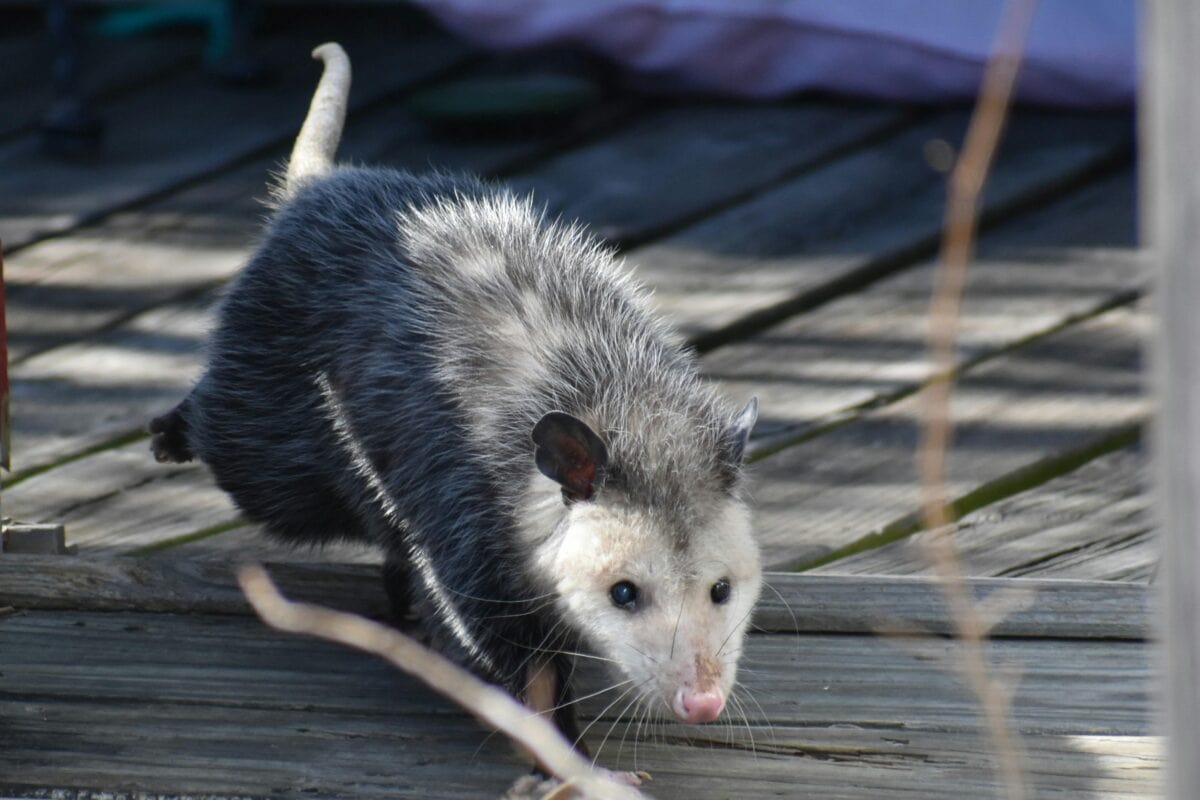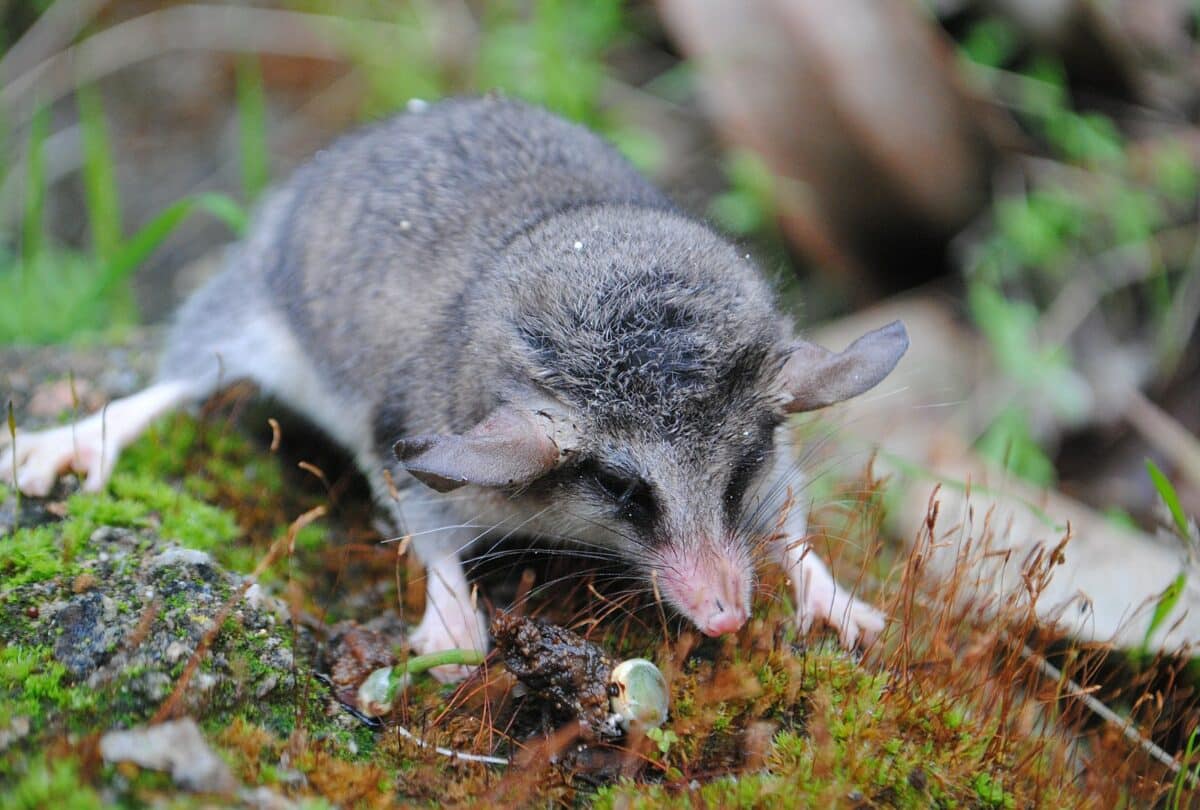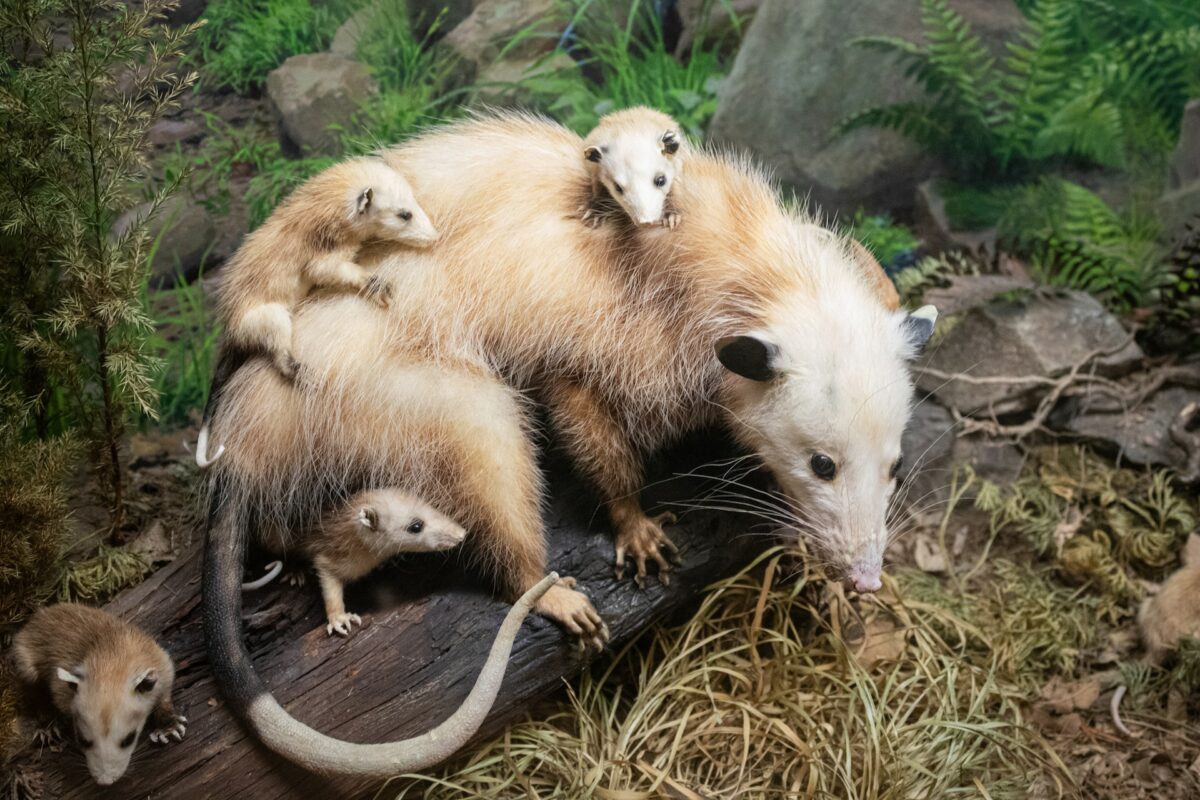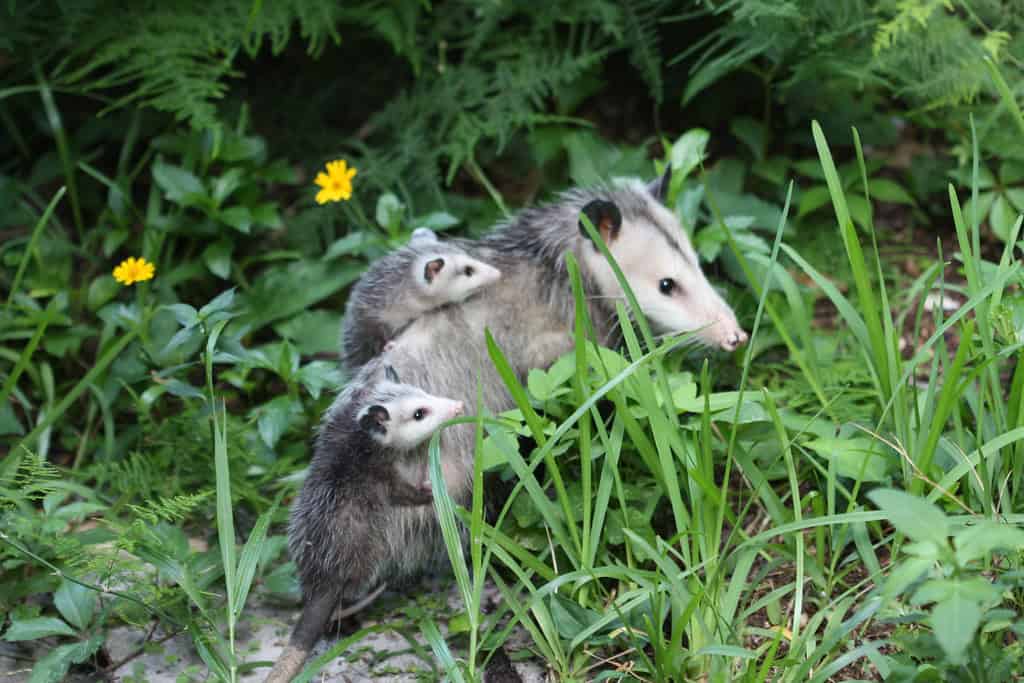In the animal kingdom, survival often depends on an arsenal of defense mechanisms. While some creatures rely on speed, strength, or camouflage, the North American opossum has developed one of the most fascinating and effective survival strategies: playing dead. This behavior, scientifically known as thanatosis or tonic immobility, has become so iconic that it has entered our cultural lexicon as “playing possum.” But what exactly happens when an opossum feigns death, and why is this seemingly simple strategy so effective against predators? This article explores the remarkable biological and behavioral aspects of the opossum’s famous defense mechanism, revealing how this misunderstood marsupial has perfected the art of survival through apparent death.
The Opossum: North America’s Only Marsupial

Before diving into their famous defense mechanism, it’s important to understand what makes opossums unique. The Virginia opossum (Didelphis virginiana) is the only marsupial native to North America. Unlike placental mammals, female opossums have a pouch where their premature young continue to develop after birth. These remarkable creatures have thrived for millions of years, with fossil records showing opossum-like animals dating back to the time of dinosaurs.
Opossums are highly adaptable omnivores with prehensile tails, opposable thumbs on their hind feet, and 50 teeth—more than any other North American land mammal. Despite their rat-like appearance that often earns them unwarranted fear and dislike, opossums are generally docile creatures that provide valuable ecosystem services by consuming ticks, rodents, and carrion. Their ancient lineage and unique characteristics make them biological marvels, with their famous death-feigning behavior being just one fascinating aspect of their evolutionary success story.
The Science of Thanatosis

Thanatosis, commonly known as playing dead or death feigning, is a form of tonic immobility—a temporary state of motor inhibition and reduced responsiveness to external stimuli. This behavior isn’t unique to opossums; it appears across the animal kingdom in insects, reptiles, amphibians, birds, fish, and some mammals. However, few species have developed this strategy to the remarkable degree that opossums have. What makes the opossum’s version of thanatosis particularly interesting is that it’s not a voluntary response but rather an involuntary physiological reaction triggered by extreme fear or stress.
When an opossum enters this state, its body undergoes significant physiological changes. Heart rate and breathing slow dramatically, muscles stiffen, and the animal becomes unresponsive. This state can last anywhere from a few minutes to several hours, depending on the perceived threat level. Scientists believe this response evolved as an effective anti-predator strategy because many predators are triggered to hunt by movement and lose interest in prey that appears to be dead or diseased. The involuntary nature of this response suggests it’s deeply encoded in the opossum’s nervous system, representing millions of years of evolutionary refinement.
What Triggers the Death-Feigning Response

The opossum’s death-feigning behavior is not a calculated decision but rather an involuntary response triggered by intense fear or stress. When an opossum encounters a threat it cannot escape through flight or intimidation displays, its nervous system essentially overloads with fear, causing it to enter a catatonic state. This response is controlled by the parasympathetic nervous system—the part of the autonomic nervous system responsible for “rest and digest” functions—which takes over in these extreme situations.
Research suggests that this response is most commonly triggered when the opossum is cornered or physically contacted by a predator. Interestingly, younger opossums tend to enter this state more readily than adults, perhaps because they have fewer defensive options available to them. The threshold for triggering this response varies between individual opossums, with some entering thanatosis more easily than others. This variation suggests there may be genetic components to the behavior, with natural selection possibly favoring individuals whose death-feigning response is most convincing to predators in their particular environment.
The Physical Transformation

When an opossum “plays dead,” the physical transformation is remarkable and extends far beyond simply lying still. The animal’s body becomes stiff and contorted, often with the mouth open, tongue lolling out, and eyes either closed or glazed over. This posture mimics the appearance of a deceased animal in rigor mortis. The opossum will often void its bowels, creating a foul odor that enhances the illusion of death and decay—a smell most predators find unappealing. Their body temperature drops, and their breathing becomes so shallow it’s nearly imperceptible.
Perhaps most impressive is the physiological control exhibited during this state. The opossum’s heart rate can drop by up to 30%, and its respiratory rate becomes extremely slow and irregular. Despite appearing completely unconscious, research suggests opossums remain somewhat aware of their surroundings during thanatosis, though they’re unable to respond or move voluntarily. This complete physiological shutdown is remarkably convincing—even experienced wildlife handlers can sometimes mistake a “playing possum” opossum for a dead one. The thoroughness of this transformation speaks to how effective this strategy must be against predators for it to have evolved to such an extreme degree.
Effectiveness Against Different Predators

The effectiveness of playing dead varies significantly depending on the predator encountered. This strategy works particularly well against predators that avoid carrion or are triggered to hunt by movement. Canids like wolves, coyotes, and domestic dogs often lose interest in prey that appears dead, as they typically prefer to chase and kill live animals. Similarly, many birds of prey rely on detecting movement to locate and capture prey, making a motionless opossum effectively invisible to their hunting instincts.
However, not all predators are fooled by this act. Scavengers and opportunistic feeders like some bears, vultures, and certain snake species will readily consume animals regardless of whether they appear dead. For these predators, the opossum’s defense mechanism is less effective. The strategy’s success also depends on timing and context—if a predator has already begun an attack before the opossum enters thanatosis, the predator may continue despite the opossum’s apparent death. This explains why opossums have evolved multiple defensive strategies, including hissing, growling, and showing their impressive array of teeth as initial deterrents before resorting to playing dead as a last-ditch effort.
How Long Can Opossums Remain “Dead”?

The duration of an opossum’s death-feigning state is remarkably variable and context-dependent. In most observed cases, opossums remain in thanatosis anywhere from a few minutes to over an hour. However, in extreme situations with persistent threats, they’ve been documented to maintain this state for up to six hours. This extended period is physiologically demanding and represents a significant investment in their survival strategy. The duration appears to be influenced by several factors, including the opossum’s perception of ongoing threat, its physical condition, age, and individual variation.
Researchers have observed that opossums won’t “revive” until they perceive the threat has passed, suggesting some level of awareness during this state. They typically emerge from thanatosis gradually, first moving their eyes and whiskers slightly before slowly regaining movement in their limbs. This gradual awakening may help prevent triggering a renewed attack from a predator that might still be nearby. The ability to maintain this state for such extended periods without causing physiological damage is a testament to how deeply ingrained this behavior is in the opossum’s biological makeup, representing millions of years of evolutionary refinement.
The Involuntary Nature of “Playing Possum”

One of the most fascinating aspects of the opossum’s death-feigning behavior is that it’s not a conscious choice or clever act—it’s an involuntary physiological response triggered by extreme fear. Similar to how humans might freeze or faint when terrified, the opossum’s nervous system initiates this protective shutdown automatically. This response is controlled by the autonomic nervous system, specifically through parasympathetic activation that overrides normal motor control. The involuntary nature of this response explains why opossums cannot be trained to “play dead” on command and why the behavior appears even in very young opossums with no prior experience with predators.
Studies have shown that during thanatosis, opossums enter a state similar to catatonia in humans, characterized by muscle rigidity and reduced responsiveness to stimuli. While in this state, they cannot be easily aroused even by painful stimuli that would normally cause immediate reaction. This involuntary response represents an evolutionary adaptation so effective that it has been preserved throughout the opossum’s evolutionary history. The fact that this behavior is hardwired rather than learned highlights its critical importance to opossum survival and explains why it appears so consistently across opossum populations despite geographical differences in predator types.
Evolutionary Origins of This Behavior

The death-feigning behavior in opossums represents one of the most dramatic examples of an anti-predator adaptation shaped by millions of years of natural selection. Evolutionary biologists believe this behavior evolved as a specialized form of the more general freezing response seen in many animals. As opossums faced predators that were triggered to hunt by movement, individuals that could remain exceptionally still had higher survival rates. Over countless generations, this simple freezing behavior likely evolved into the elaborate physiological shutdown we observe today.
The marsupial lineage that includes opossums diverged from other mammals approximately 65-80 million years ago, during the late Cretaceous period. Fossil evidence suggests opossum-like animals were already present when dinosaurs still roamed the Earth. This ancient lineage helps explain why their defensive strategies might differ from those of more recently evolved mammals. The persistence of thanatosis in modern opossums suggests this strategy has remained effective against an ever-changing cast of predators throughout their evolutionary history—from prehistoric predators to modern-day threats like domestic dogs and cars. The behavior’s effectiveness across such a vast timespan underscores why natural selection has preserved and refined this remarkable adaptation.
Other Defense Mechanisms in Opossums

While playing dead is the opossum’s most famous defense strategy, it represents just one tool in their survival toolkit. Before resorting to thanatosis, opossums typically employ a series of escalating deterrents. When first confronted by a potential threat, an opossum will often bare its impressive set of 50 teeth (more than any other North American land mammal) while hissing, growling, and drooling to create an intimidating display. They may also release a foul-smelling greenish substance from their anal glands, creating an unpleasant odor that deters some predators.
Opossums are also surprisingly agile when needed, capable of climbing trees quickly to escape ground predators. Their prehensile tails provide extra stability during these escapes. Young opossums may respond to threats by entering a defensive catatonia where they become rigid but don’t fully mimic death, allowing their mother to carry them to safety. Some opossums will also enter water to escape threats, as they are capable swimmers. This graduated series of defensive responses showcases the opossum’s adaptive flexibility, with death-feigning serving as a last resort when all other strategies have failed—typically when the animal is cornered or directly contacted by a predator.
Common Misconceptions About “Playing Possum”

Despite the popularity of the phrase “playing possum,” several misconceptions persist about this remarkable behavior. Perhaps the most common misunderstanding is that opossums consciously choose to play dead, deliberately tricking predators through clever acting. As we’ve discussed, thanatosis is actually an involuntary physiological response triggered by extreme fear—more akin to fainting than to conscious deception. Another widespread misconception is that opossums can control when they enter or exit this state, when in reality, they remain “dead” until their nervous system naturally recovers from the stress response.
Some people incorrectly believe that all opossums play dead when threatened, when in fact, this is typically a last resort after other defensive strategies have failed. Additionally, there’s a misconception that opossums are immune to the venom of all snakes when encountering them; while they do have some resistance to certain venoms (particularly from pit vipers), this resistance isn’t complete immunity. Finally, many people mistake the opossum’s frozen, open-mouthed grimace during thanatosis as aggression, when it’s actually part of the involuntary death-mimicking posture. Understanding these distinctions helps develop a more accurate appreciation for this sophisticated survival mechanism and the remarkable animal that employs it.
Similar Behaviors in Other Species

While opossums have perfected the art of playing dead, they’re far from the only species to employ thanatosis as a survival strategy. This behavior appears across remarkably diverse animal groups, suggesting it has evolved independently multiple times throughout evolutionary history. Among invertebrates, certain beetles, mantids, and spiders will feign death when handled or threatened. The hognose snake puts on perhaps the most dramatic display among reptiles—rolling onto its back, mouth agape, tongue hanging out, and sometimes emitting a foul odor from its anal glands in a performance remarkably similar to the opossum’s.
Among birds, the killdeer feigns injury rather than death, dragging its wing as if broken to lure predators away from its nest. Certain fish species, like the cichlid, will float motionless as if dead when threatened. Even a few other mammals employ variations of this strategy—some species of African ground squirrels will go limp when captured by predators, occasionally allowing them to escape when the predator relaxes its grip. What makes the opossum’s version particularly noteworthy is its physiological completeness and duration. While these various examples of convergent evolution highlight how effective death-feigning can be as a survival strategy across different ecological contexts, few species have developed the behavior to the remarkable extent seen in opossums.
The Fascinating World of Opossum Behavior

The opossum’s remarkable ability to feign death represents just one fascinating aspect of their unique biology and behavior. These resilient marsupials have survived for millions of years through adaptability and specialized survival strategies that continue to serve them well in our modern world. Their involuntary thanatosis response, triggered by extreme fear, represents an evolutionary masterpiece—a sophisticated physiological shutdown that convincingly mimics death to deter predators. The effectiveness of this strategy is evidenced by its persistence throughout the opossum’s long evolutionary history.
Beyond the biological wonder of this behavior, the opossum’s death-feigning ability reminds us that nature’s solutions to survival challenges are often more complex and nuanced than they initially appear. What might seem like simple “playing dead” actually involves intricate neurological and physiological processes refined over millions of years of natural selection. As we continue to study these remarkable creatures, we gain not only a better understanding of their specific adaptations but also broader insights into the diverse ways that life has evolved to persist in the face of challenges. The humble opossum, often maligned and misunderstood, deserves appreciation both for its ecological contributions and for the evolutionary marvels it represents.
- Could Rising Oceans Swallow Miami by Mid-Century? - August 13, 2025
- You’ve Heard Daddy Longlegs Are the Most Venomous Spiders, But That’s Not True - August 13, 2025
- The Fastest Land Animal You’ve Never Heard Of (It’s NOT a Cheetah!) - August 13, 2025

